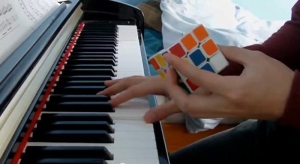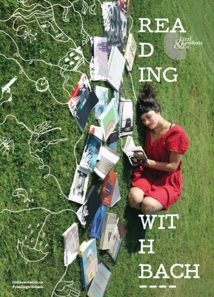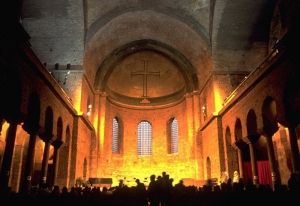Tags
acoustics, architecture, BBC Music Magazine, cello, Dane Johansen, El Camino de Santiago, Frómista, harmony, Köthen, performance practice, reverberation, Romanesque, Sahagún, Spanish, St. Martin of Tours Church, Suites, tempo

St. Martin of Tours Church
Yesterday I sat with my cello in the nave of San Martín de Tours in Frómista, Spain. Located in the middle of an otherwise empty town square, this eleventh-century church is one of the purest examples of Spanish Romanesque architecture along the Camino. Plants and human figures are carved into the capitals of the columns supporting many delicate arches. Each arch seems to be in perfect proportional harmony with all the others, and the simple interior lends a feeling of quiet serenity. I had been recording there for several hours and had watched the light move across the ancient stone, worn soft and smooth by the passing of time.
I have been hiking the Camino de Santiago through Spain for two weeks now, performing Bach’s Suites for Unaccompanied Violoncello (BWV 1007-12) every night in ancient churches along the pilgrimage route. Every church I play in is unique, not only visually and stylistically, but acoustically as well. The acoustics in San Martín were the most resonant I’ve encountered so far. As in any location, I had to adapt my playing of Bach’s music to suit the church. Sound reverberated in the space for about five seconds, so I had to slow down my tempi and breathe as much space and time into the music as possible.
Many fellow pilgrims come night after night to hear Bach’s music in the beautiful churches, and San Martín seemed to be a favorite. People expressed feelings of peace in the space, and many remarked on the church’s simplicity and the luscious acoustics. One pilgrim expressed how wonderful it was to hear the harmonies bleeding together as a result of the resonance.
While walking today, I wondered if Bach ever heard his Suites performed in a space resonant enough to produce vertical harmony from the linear harmony he composed. I feel there must have been such a space in Köthen, Germany, where he composed the solo cello and violin works.
Though the performances have been successful, the trip is not without challenges. Walking 20-30km (12-18 miles) every day is no easy feat; each time I arrive in a new town my feet and legs are aching from overuse. Producing a film and recording is a full-time job, and managing my team of eight is teaching me to anticipate and solve problems and to manage interpersonal dynamics. Choosing to perform concerts every night of this six-week journey makes for an incredible experience, but it allows little time for me to be alone with my instrument. I came to Spain understanding that the weather would be quite warm and thinking I could practice outside in the shade. But on the contrary: it has been very cold here, which not only limits my ability to practice, but it makes performing extremely difficult. The journey continues, and thankfully the weather is warming. My cello is drying out and responding more quickly, and the churches should start warming up, too.
Today I will walk 39km (24 miles) to Sahagún. After such a long day on the trail it will be wonderful to disappear into Bach’s music and forget about my sore feet.
Dane Johansen – BBC Music Magazine



 Lizzi Kew Ross and Co.’s Reading with Bach brings us dancers and musicians into the territory of books. Reading with Bach is a kind of excavation, where the real and imagined worlds collide. Through movement and music, we watch, see, listen, engage and speculate on that strange, solitary act that is reading.
Lizzi Kew Ross and Co.’s Reading with Bach brings us dancers and musicians into the territory of books. Reading with Bach is a kind of excavation, where the real and imagined worlds collide. Through movement and music, we watch, see, listen, engage and speculate on that strange, solitary act that is reading.
